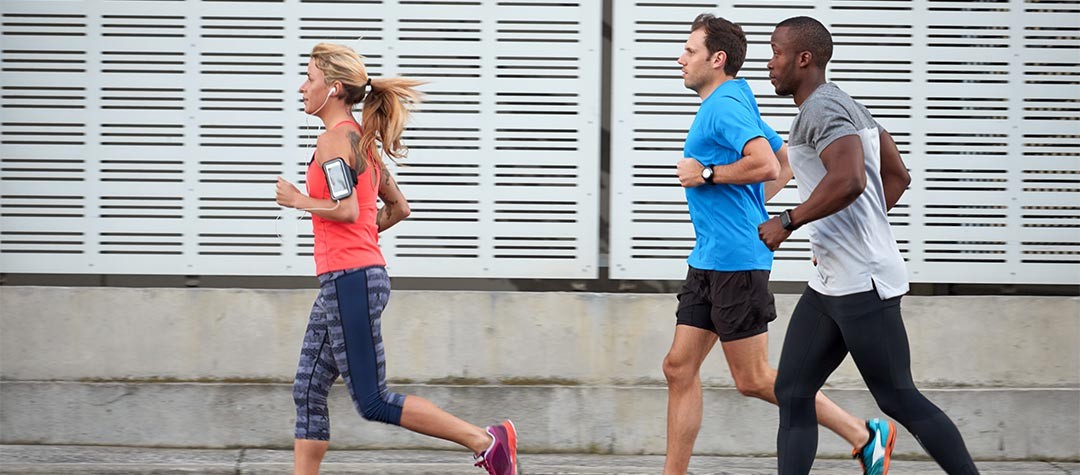Aiming to break the 20-minute barrier for 5k? Find out how speed work, strides, and pacing can help you achieve that PB.
If you're looking to re-write your 5k PB and become a member of the sub-20-minute club then look no further! Here are some top tips to help you smash through that elusive 20 minute barrier:
Don't neglect endurance
It's very easy to become caught up in the need for speed , but remember that 5k is very much an aerobic event, so neglect endurance work at your peril.
5k is very much an aerobic event, so neglect endurance work at your peril.
With better endurance you'll be able to hold your speed for longer and will finish faster and stronger. Consistent training and regular weekly long runs are the most effective ways to improve your endurance.
Specific speed work
In order to run a fast 5k, you need to prepare your body's physiology to run at a higher intensity than it might be used to. This means doing some training at your target race pace (sub-4-minutes per kilometre) and slightly faster. Interval training is a great way to do this.
Here are some suggestions for some specific 5k workouts that can be done on the track or on the road or grass to time rather than distance.
- 6 x 800m with 2 minutes jog recovery
- 10-12 x 400m with 90 seconds jog recovery
- 5 x 1km with 2-3 minutes jog recovery
- 2-3 sets of 800m, 600m, 200m with 90 seconds recovery
Try some tempo
Whilst it's important to include some interval work in your training, you'll also need to practice some sustained running at a higher intensity, as after all there aren't any recovery periods during a race. Tempo runs are a fantastic way to do this.
These runs should be run at what physiologists term 'lactate threshold', that is a pace that is just below the point at which lactate begins to accumulate more rapidly in your blood. This improves your body's ability to buffer the lactate and therefore delays fatigue, which in essence enables you to run at a faster pace for longer.
A tempo run shouldn't be an ‘eyeballs out’ effort but rather at a 'comfortably hard' pace.
A tempo run shouldn't be an ‘eyeballs out’ effort but rather at a 'comfortably hard' pace. The key is not to run too hard during this type of workout as you won't achieve the desired physiological effect and will quickly dig yourself a hole. The best way to determine your pace for a tempo run is by feel. Try the talking test-you should be able to say three to four word sentences such as 'I feel great'. After one or two miles easy warm up, try starting with 10 minutes at tempo pace and gradually build up to a total of 25 minutes as you progress.
Pre-race strides
In order to prime your anaerobic energy systems and to get your neuromuscular system firing on all cylinders, try some fast, extended strides as part of your warm up routine . This will help you to be ready to hit your goal pace from the gun and avoid that sluggish feeling that can often occur during the first kilometre or so. Try including 2-3 x 150m fast strides at race pace as part of your warm up.
Perfect pacing
5k is a relatively short distance so it's all too easy to think that you need to hit it really hard from the gun. However, running too hard too soon will more than likely result in you accumulating lactate faster than you can clear it and you'll be forced to slow down.
As with the longer distances, the best approach is to try and run even splits or if possible a negative split (where you run the second half of the race slightly faster than the first). In order to comfortably break the magic 20-minute barrier you'll need to aim to run each of the five kilometres in sub-4 minutes. Good luck and happy racing!














